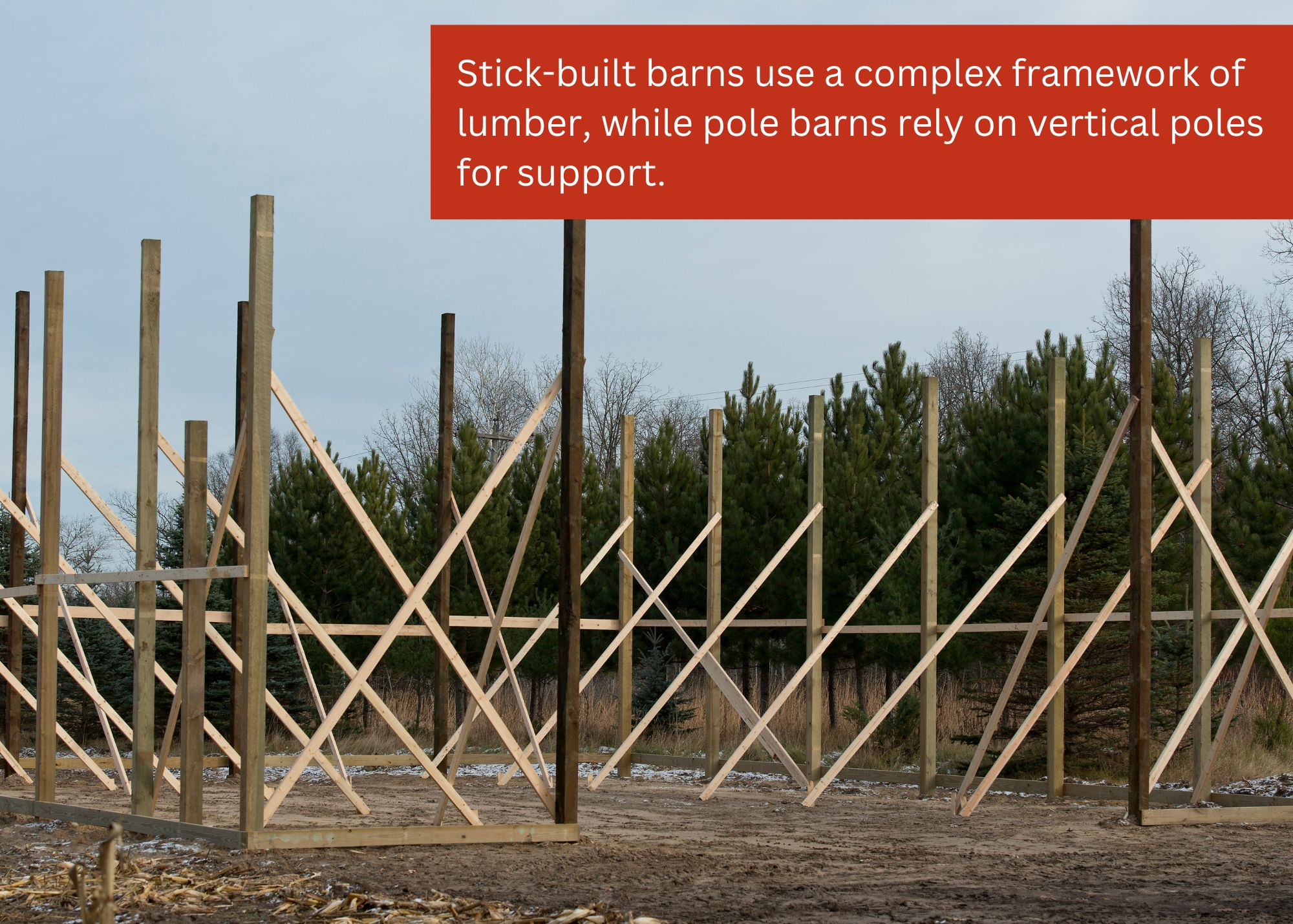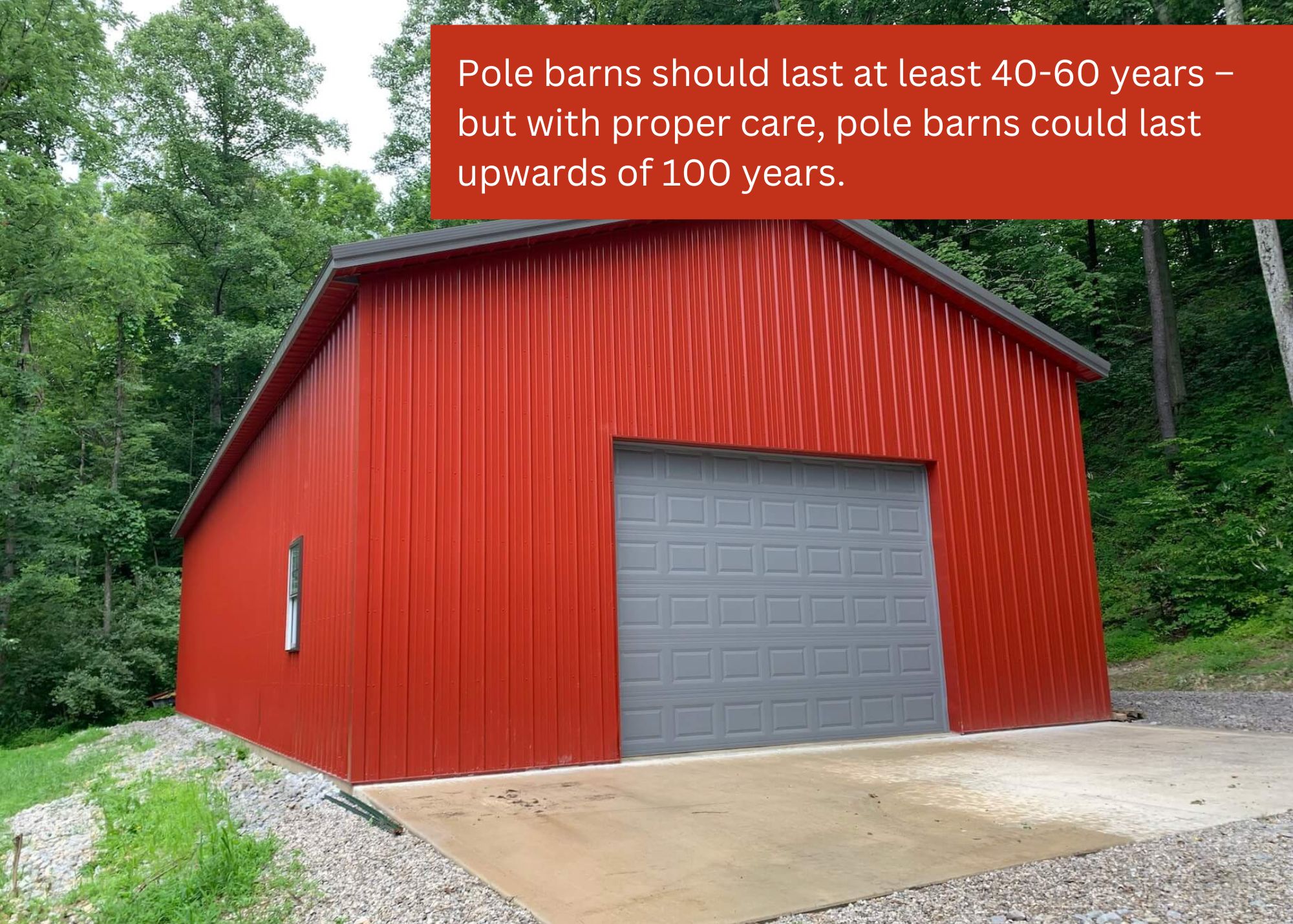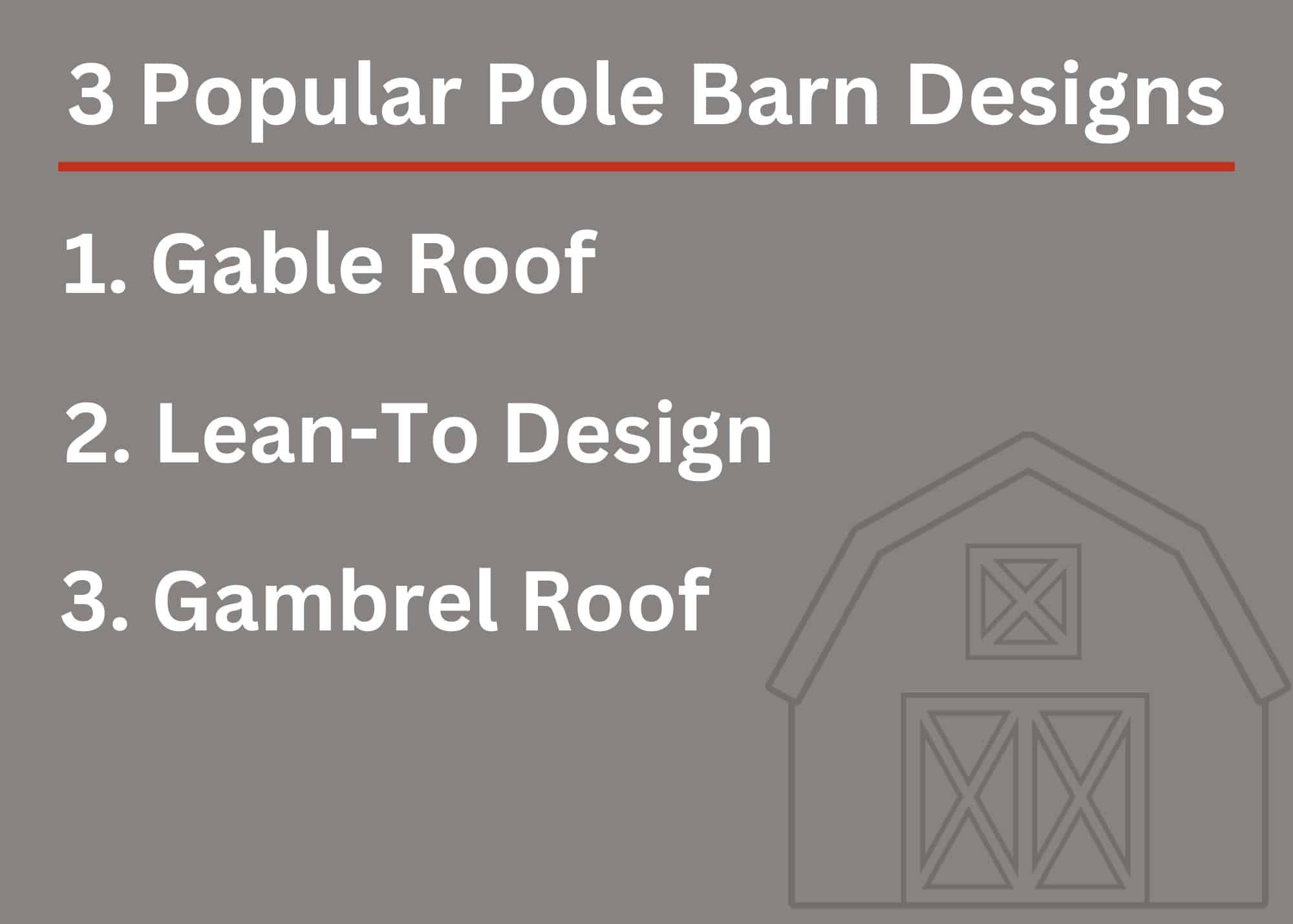Why a Pole Barn Is Right for You: FAQs Answered
Have you ever dreamt of having a spacious, functional building that is both affordable and practical?
Look no further than pole barns!
Here at Hilltop Post Buildings, we're passionate about helping you translate those dreams into reality. We specialize in crafting top-of-the-line pole barns renowned for their strength, versatility, and cost-effectiveness.
This comprehensive FAQ blog post is designed to be your one-stop guide to pole barns. Whether you're a seasoned builder seeking to refresh your knowledge or a complete newcomer curious about these remarkable structures, we've got you covered. Dive in and explore the exciting world of pole barns – from their core principles to their diverse applications!
Table of Contents
1. What Is a Pole Barn?
Imagine a spacious, functional building with a simple yet strong structure. That's the essence of a pole barn! These buildings use vertical poles buried into the ground to support the roof and walls. The exterior is typically clad in metal, offering a clean and weather-resistant finish.
The most striking feature?
A wide-open interior free from load-bearing walls, perfect for maximizing usable space.
2. Why Do They Call It a Pole Barn?
The name is quite literal! Unlike traditional buildings that rely on a poured footer and foundation, pole barns rely on strong poles buried into the ground for their primary support. These poles act like pillars, holding up the entire structure – it’s strong and more affordable than pouring a footer.
3. What's the Difference Between a Stick-Built Barn and a Pole Barn?
Perhaps you're familiar with the classic stick-built barn – a traditional wooden structure with a post-and-beam frame. While both offer shelter, there are key differences:
- Construction Method: Stick-built barns use a complex framework of lumber, while pole barns rely on vertical poles for support.
- Speed and Simplicity: Pole barns are generally faster and easier to construct due to their less intricate design.
- Cost-Effectiveness: Pole barns are typically a more budget-friendly option compared to stick-built barns.
- Materials: While both utilize wood, pole barns often incorporate metal for exterior cladding, offering additional weather resistance.

4. Are Pole Barns Worth the Money?
Absolutely! Here's why pole barns are a smart investment:
- Cost-Effective: As mentioned earlier, pole barns offer great value, especially for the spacious area they provide.
- Durable and Low Maintenance: Built with strong materials like treated lumber and metal, pole barns require minimal upkeep.
- Versatile: Their open design allows for a wide range of uses, from storage to workshops to pole barn homes and more!
- Customization: You can tailor your pole barn to your specific needs with various sizes and design options.
5. How Many Years Will a Pole Barn Last?
With proper construction and maintenance, a pole barn can last for several decades! The exact lifespan depends on various factors:
- Quality of Materials: Using pressure-treated lumber and corrosion-resistant metal ensures a long-lasting structure.
- Construction Practices: Proper installation techniques and following building codes are essential for a sturdy and durable barn.
- Climate: Factors like heavy snowfall or strong winds can impact the lifespan. Consider local weather conditions when designing your pole barn.
- Use: The demands placed on the barn will also influence its longevity. A workshop with heavy machinery may require more frequent maintenance than a simple storage unit.
In summary, your pole barn should last at least 40-60 years – but with proper care, pole barns could last upwards of 100 years.

6. What Is a Pole Barn Used For?
The beauty of a pole barn lies in its versatility! Here are just a few of the many possibilities:
- Storage: Keep vehicles, equipment, household items, or even agricultural supplies safe and organized.
- Workshops: Create your dream workshop for carpentry, mechanics, woodworking, or even an art studio.
- Animal Housing: Provide a comfortable and secure space for horses, livestock, or other animals.
- Agricultural Uses: Utilize your pole barn for storage of crops, equipment, or animal feed processing.
- Recreational Areas: Transform your pole barn into a sports court, game room, or a space for entertaining.
- Businesses: Businesses can benefit from pole barns as warehouses, retail shops, or workspaces.
- Barndominium: A pole barn used as a home!
7. What Is a Pole Barn Kit?
Thinking about building your own pole barn? A pole barn kit can be a great option! These kits come with pre-cut and pre-drilled materials, simplifying the construction process. Here's why kits are popular:
- Saves Time and Effort: Pre-cut materials eliminate the need for on-site measuring and cutting, saving you valuable time and effort.
- Cost-Effective: Kits can be a more budget-friendly option compared to completely custom builds.
- Variety of Options: Reputable suppliers like Hilltop Post Buildings offer a variety of pre-designed kits in different sizes and styles to suit your needs.
8. What Are Some Popular Pole Barn Designs?
While pole barns offer flexibility, some popular designs stand out:
- Standard Rectangle with Gable Roof: This is the most common design, offering a simple yet spacious layout.
- Lean-To Design: Perfect for attaching to an existing building, a lean-to barn features a single-sloped roof ideal for extra storage or workspace.
- Gambrel Roof Barn: This design provides additional headroom with its vertical walls extending partway up the roof slope. Gambrel barns are a great option for workshops or storage requiring extra vertical space.
At Hilltop Post Buildings, we can also design custom pole barns to match your specific needs and preferences. Don't hesitate to discuss your vision with our experts!

10. Can One Person Build a Pole Barn?
While tempting, building a pole barn solo is not recommended. These structures can be quite large and while the building process isn’t too complicated, you’ll be working with heavy materials. Safety is paramount, and proper construction techniques are essential. For a safe and efficient build, we highly recommend using qualified professionals or a construction crew.
Additional Questions about Building a Pole Barn
- Do I need a permit to build a pole barn? Building permit requirements vary by location. It's crucial to check with your local building department before starting construction. We may be able to offer guidance on the permitting process in your area.
- What financing options are available for pole barns? At Hilltop Post Buildings, we can discuss potential financing options available to help you achieve your pole barn goals.
- What ongoing maintenance is required for a pole barn? Pole barns are generally low-maintenance structures. However, we recommend regular inspections and occasional cleaning of gutters and ventilation systems to ensure longevity.
- Can I expand a pole barn in the future? Depending on the design, some pole barns can be expanded by adding additional bays or sections. During your planning stage, feel free to reach out to our experts at Hilltop Post Buildings to discuss future expansion possibilities.
- What are the different insulation options for pole barns? Insulation is essential for regulating temperature in your pole barn, especially if you plan to use it as a workshop or living space. During the designing phase of your planning, we can advise you on various insulation options to suit your needs and climate.
Begin Your Pole Barn Project Today!
We hope these FAQs have given you a better understanding of pole barns! Their affordability, durability, and versatility make them a great choice for a variety of needs.
If you're considering a pole barn for your property, we're glad to help. We offer a variety of high-quality post barns, expert design services, and all the guidance you need throughout the process. Contact us today for a free quote and let's discuss how we can create the perfect pole barn for you!
